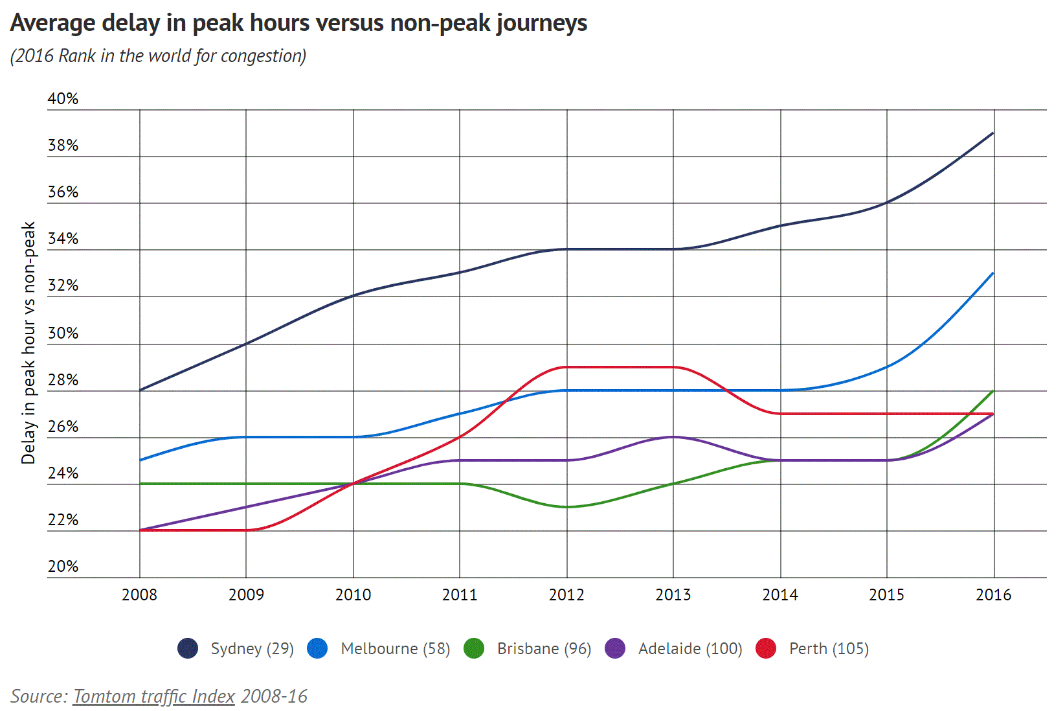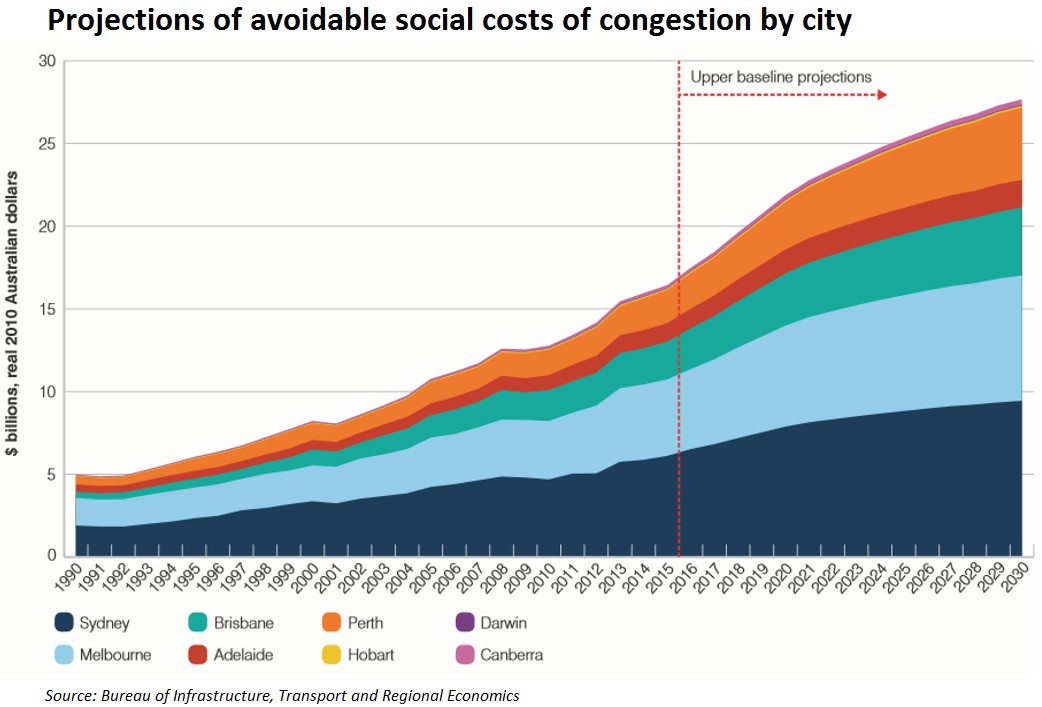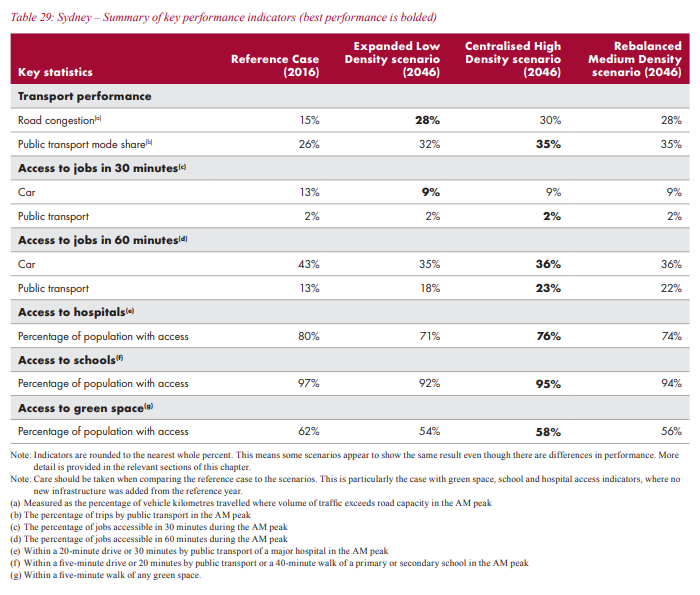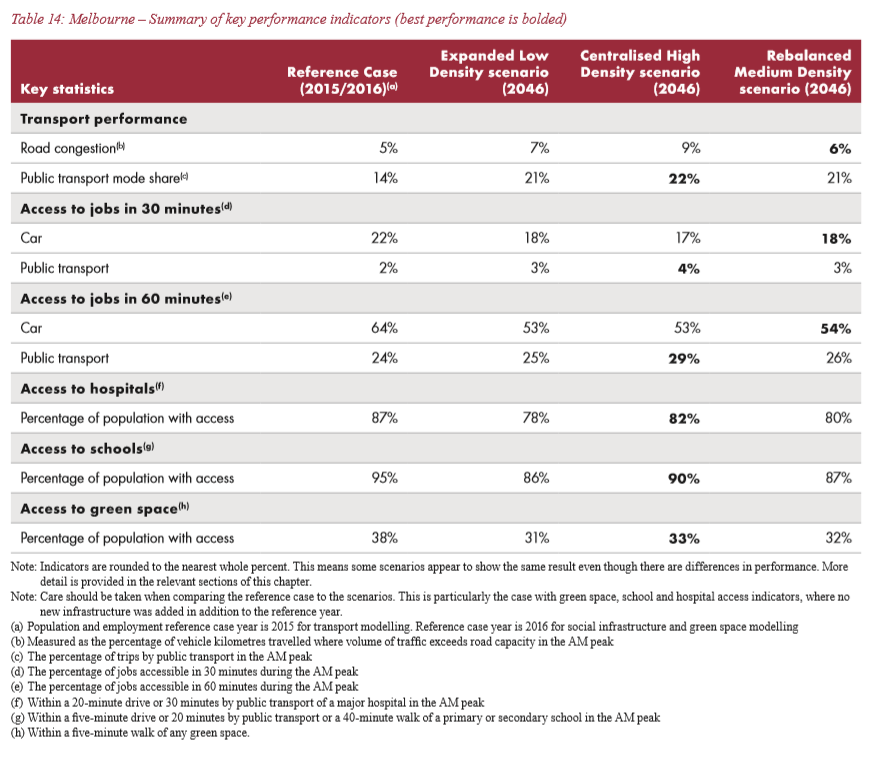In 2014, the Grattan Institute published a report entitled Mapping Australia’s economy: cities as engines of prosperity, which mapped the Australian economy by the location of economic activity, defined as the dollar value of goods and services produced by workers within a particular area.
A central conclusion of this report was that “cities are the engines of economic prosperity” and that “too many workers live too far away to fulfil our cities’ economic potential”. Grattan was also concerned by the level of sprawl, which was supposedly making it harder for residents to access cushy CBD jobs:
If current settings remain unchanged, Australian cities are likely to continue to spread outwards, further increasing the distance between where many people live and the most productive parts of large cities, with implications for both productivity and opportunity.
Around the same time, Grattan released a book entitled City Limits, which argued that Australia’s cities had become dysfunctional with workers increasingly separated from employment:
The divide between where people live and work in Australian cities is growing, with most new jobs being created close to city centres while most population growth is occurring in the outer suburbs…
The distance between where people live and where they work is growing fast. The housing market isn’t working, locking many Australians out of where and how they’d like to live. The daily commute is getting longer, putting pressure on social and family life and driving up living costs…
In large outer areas of Australia’s biggest cities, less than 10 per cent of all jobs in the city can be reached in a 45-minute drive…
One in four full-time employees in Australia’s big cities spends more time commuting than with their children.
However, being staunch defenders of the ‘Big Australia’ mass immigration policy, Grattan has suddenly changed its tune, releasing a new report entitled “The myth of the bulging, out of control Australian city”. Now workers in our major cities are apparently no longer having difficulty getting to work amid break-neck growth:
Australia’s urban commuters have little to fear from population growth, if recent experience is any guide. Contrary to frequent media reports, the population boom has had little impact on commuting.
The average commute distances and times barely increased over the five years to 2016, even as Sydney and Melbourne’s populations grew at rates among the highest in the developed world…
The benign impact of population growth is partly explained by the spread of jobs within the major cities. It’s a misconception that jobs are centred in CBDs, which become harder to get to as cities grow. In reality, fewer than two in ten people work in CBDs, whereas three in ten work in a suburb just away from home…
Migration has not brought cities to a standstill. Cities have coped even though major new projects including Melbourne Metro, WestConnex in Sydney, and Brisbane’s Cross River Rail have not yet been completed.
People adapt – they are not hapless victims of population growth, depending for their wellbeing on governments building the next freeway or rail extension.
Quite a change in rhetoric, isn’t it?
Sadly for Grattan, the evidence does show rising congestion costs in the migrant hotspots of Sydney and Melbourne. Here’s TomTom’s traffic index:

Here’s the Bureau of Transport and Regional Economics (BTRE):

Along with Mike Seccombe’s explanation in the Saturday Paper:
The Bureau of Infrastructure, Transport and Regional Economics estimates the “avoidable” social costs of traffic congestion in the eight Australian capitals cities. They reckoned it to total $16.5 billion in the 2015 financial year, up from $12.8 billion in the 2010 financial year. By 2030, they forecast, the cost of congestion would rise to between $27.7 billion and $37.3 billion. That is roughly the cost of the National Disability Insurance Scheme, fully implemented.
And here’s Infrastructure Australia’s projections for Sydney and Melbourne, whereby congestion is projected to soar and access to jobs, schools, hospitals and open space will all decline by 2046, irrespective of how these cities build-out to cope with populations of 7.4 million and 7.3 million people respectively:


Grattan can’t polish this turd.

